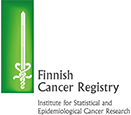Evaluation tool webinar 
The EU-TOPIA evaluation tool can be accessed via miscan.eu-topia.org. Once you created an account, the user guide of the evaluation tool can be downloaded there as well. However, for a quick visual introduction to the evaluation tool you could view the videos below. Also, these recordings of the webinar on July 14 2020 contain a demonstration of the renewed cost-effectiveness tool. After the last video, you will find the questions that were asked during this webinar, including the answer of the EU-TOPIA team. If you have any questions that are not answered by the user guide or the videos below, don’t hesitate to contact us via eu.topia@erasmusmc.nl or use the contact button on the top right of this page.
Videos on the general use of the evaluation tool
1 – How to get more information on the tool, models and their underlying assumptions
2 – How to download and fill out data templates
3 – How to simulate different screening scenarios
Videos on the use of the cost-effectiveness tool
4 – How to perform a cost-effectiveness analysis in the webtool
5 – How to interpret and change cost-effectiveness results
6 – How to access previously simulated results
7 – What to do if you have limited cost data
8 – Cost-effectiveness analysis tool only available for simulations performed with the new version of the tool
Q&A
Most questions will be answered in the user guide of the evaluation tool, which can be downloaded via the ‘User guide’ button on the top right of the main web page of the evaluation tool (miscan.eu-topia.org). Below are some of the questions that came up during the webinar with their answers. If you have any other questions, you can ask them via eu.topia@erasmusmc.nl
Q: How can we reference to the webtool if we would use it for a publication?
A: There are two publications underway. Please contact us when you are close to submitting so we can provide you with the best reference.
Q: Currently we can only use the model of one exemplary country for our country while we believe we are more similar to a different exemplary country. Would it be possible to use that model instead?
A: We You could check in the fact sheets whether your country really is more similar to a different exemplary country. If this would be the case you can request a change via eu.topia@erasmusmc.nl
Q: Would it be possible to start the screening programme in 2020 instead of 2018 in the webtool?
A: It doesn’t really matter which year you use, all results will be postponed 2 years. To improve the reliability of the outcomes you can also move the population sizes 2 years forward (e.g. move the population sizes of 2020 to 2018).
Q: Would it be possible to apply a discount rate of 5%?
A: This is not possible. Results are presented using the international standard of 3%.
Q: Do we need all own data or is there some sort of prefilled template?
A: The must have data (indicated by the red coloured tabs of the data template) is required to use the tool, all other data can be automatically used from the exemplary country. A table indicating which data is mandatory is also available in the user guide.
Q: We have only local data on coverage, can we use your data?
A: Using coverage data from other countries would not be very usable. Perhaps you can use data from smaller regions of which you do have data available and extrapolate them to the entire region. If this would not be realistic, your expert opinion would likely provide a better estimate than data from other countries.
Q: Have you done any modelling on how long it would take to come back to point 0 after the COVID disruption?
A: We are doing analyses for the Netherlands as well as in the global COVID and cancer modelling consortium of which Iris is the co-lead together with Karen Canfell. We will keep you up-to-date with further developments.









